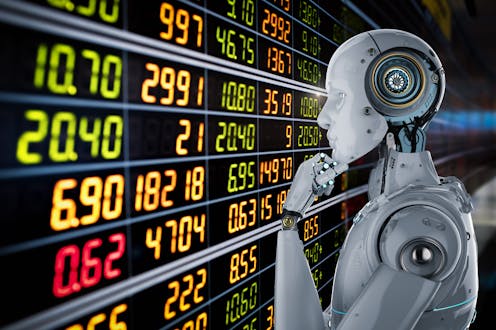
Science + Tech – Articles, Analysis, Opinion
Displaying 501 - 525 of 3602 articles

Figuring out how to regulate AI is a difficult challenge, and that’s even before tackling the problem of the small number of big companies that control the technology.

If hunter-gatherers went beyond nose-to-tail eating to include the undigested plant matter in a prey animal’s stomach, assumptions about gendered division of labor start to fall apart.

Unlike opioid drugs like morphine and fentanyl that travel throughout the body, the opioids your body produces are released in small quantities to specific locations.

Biased algorithms in health care can lead to inaccurate diagnoses and delayed treatment. Deciding which variables to include to achieve fair health outcomes depends on how you approach fairness.

Fungal infections can be among the hardest to treat, and since the pandemic began they’ve become only more common. To prevent future antifungal resistance, scientists have developed tiny molecular drills.

China’s newest hypersonic missile, the DF-27, could sideline US aircraft carrier groups in the Pacific, while missiles in the works in China, Russia and the US threaten global security.

Transcranial alternating current stimulation, or tACS, is a type of brain stimulation that can change neural activity and improve memory, attention and executive function.

Generative AIs may make up information they serve you, meaning they may potentially spread science misinformation. Here’s how to check the accuracy of what you read in an AI-enhanced media landscape.

Generative AI, those astonishingly powerful language- and image-generating tools taking the world by storm, come at a price: a big carbon footprint. But not all AIs are equally dirty.

Pain has long been subjectively measured, leading to frustrations for patients and doctors alike. Identifying neural biomarkers of pain could improve diagnosis and lead to better treatments of chronic pain conditions.

Software you may already use every day can track your productivity for your employer.

Upgrades to the hardware and software of the advanced observatory should allow astrophysicists to detect much fainter gravitational waves than before.

Metaphorical black boxes shield the inner workings of AIs, which protect software developers’ intellectual property. They also make it hard to understand how the AIs work – and why things go wrong.

Reintroducing wolves can restore important ecological processes, but it can have unintended effects when smaller predators like coyotes are driven closer to people, a team of ecologists found.

Wall Street’s history of embracing high-speed algorithmic trading suggests ChatGPT will pose similar – if bigger – risks to financial markets.

While mRNA vaccines are designed to last longer in the body than mRNA molecules typically would, they are also tested to ensure they are eliminated from livestock long before milking or slaughter.

Environmental DNA provides a wealth of information for conservationists, archaeologists and forensic scientists. But the unintentional pickup of human genetic information raises ethical questions.

In many animals, including humans, adverse events in youth have lasting negative health effects over the life span. But new research suggests something different is going on in mountain gorillas.

Studying the brief and tiny quantum effects that drive living systems could one day lead to new approaches to treatments and technologies.

Despite the association of ‘Luddite’ with a naïve rejection of technology, the term and its origins are far richer and more complex than you might think.

‘Star Trek: Picard’ is set 400 years in the future, but, like most science fiction, it deals with issues in the here and now. The show’s third and final season provides a lens on cybersecurity.

Genetics expert Jean Bennett explains how gene therapy is being used to treat certain forms of inherited blindness.

Stars begin to expand when they run out of fuel and can become thousands of times larger, consuming any planets in the way. For the first time, astronomers have witnessed one such event.

One researcher’s experience from a quarter-century ago shows why bias in AI remains a problem – and why the solution isn’t a simple technical fix.

Pinpointing where memories are stored in the brain and how they are transmitted could provide new targets to treat neurological diseases and serve as models for neuromorphic computing.
